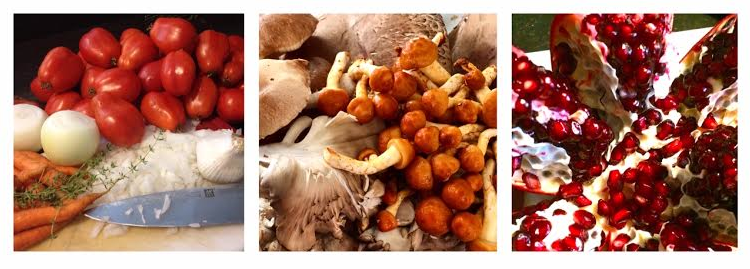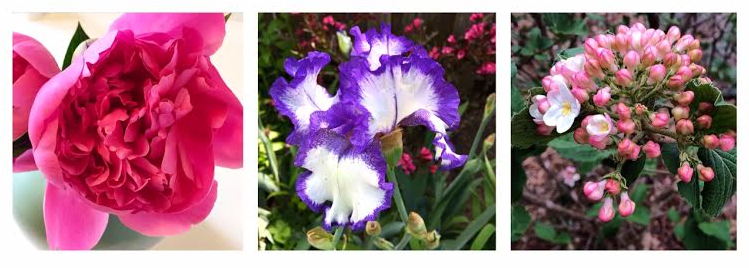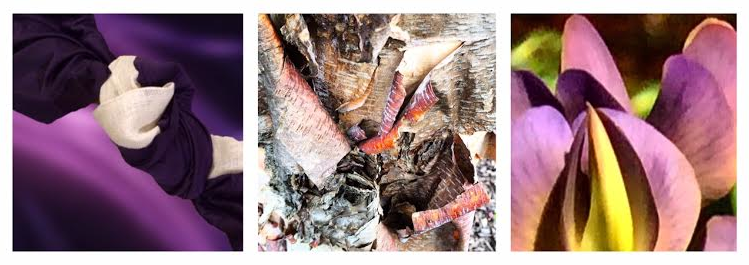Glimpses of Healing and Hope
May 30, 2016
by: Jane Bishop Halteman

Growing season has arrived in Michiana…that time to plant cucumbers and squash, chives and basil, green peppers and grape tomatoes if you’re a salad gardener. This early in the season, you might need to supplement with farmers’ market greenhouse lettuces and last year’s successfully wintered-over root vegetables. I find myself drawn to photograph the new green shoots of life rising from the garden as well as the farmers’ produce which arrives on the scene earlier than what’s growing in our garden.

From the first spring crocuses and daffodils to the present profusion of poppies and iris, backyard flower gardeners are likely to be photographing their floral successes or watching friends’ Facebook feeds, regularly streaming since snow’s departure a parade of perennial flowers and blooming trees, including forsythia, grape hyacinth, viburnum, flowering quince, weeping cherry, redbud, dogwood, bleeding heart, lilac, honeysuckle, lily of the valley, rhododendron, forget-me-nots, star of Bethlehem, weigela, and even the splendor of dandelions.

Ten years ago on a trip to Europe with Jim’s economics students, I began taking photos of trees…not just ordinary trees, but trees whose gargantuan trunks or looming shadows or unusual leaf arrangements spoke to me about something beyond simple documentation. They weren’t the kinds of photos I showed my friends on our return home, but I began experimenting with some of my tree and flower photos by turning them into laminated cards I handed out in contemplative Sunday school classes.
Many years after I started practicing the spiritual discipline of contemplative photography without benefit of training or even knowing that such a thing existed, I learned from Jan Phillips’ book, God Is at Eye Level, that contemplative photography is a powerful way to express faith and share values and commitments. “Photography can be our access into new worlds that tear our hearts and minds wide open, a press pass to intimacy,” according to Phillips.
The jacket of Phillips’ book says this: For amateurs and professionals alike, this book is the story of photography’s power to renew the spirit. Jan Phillips helps us transform sight into vision, leading us to see that images can be mirrors for our deepest truths, even in our simple snapshots. “The real thing about photography,” Jan says, “is that it brings you home to yourself, connects you to what fulfills your deepest longings. Every step in the process is a step toward the light, an encounter with the God who is at eye level, whose image I see wherever I look. There’s something holy about this work. Like the pilgrim’s journey; it’s heaven all the way.”
Christine Valters Paintner, author of Eyes of the Heart: Photography as Christian Contemplative Practice, offers this handout which describes visio divina practiced with photography as “a way of seeing the world with the eyes of the heart, which is the place of receptivity and openness, rather than with the mind, which is often the place of grasping and planning. It is an adaptation of the ancient practice of lectio divina.”
She invites practitioners to take a camera on a contemplative walk, “a walk where your sole focus is on being present to each moment’s invitation as it unfolds, rather than setting out with a particular goal.” Her suggested process involves “settling and shimmering” (noticing what calls your attention), “savoring and stirring” (noticing what happens inside yourself), “summoning and serving” (noticing the invitation which rises from your prayer), “slowing and stilling” (noticing the entire experience in the stillness).
Valters Paintner maintains that “as a Christian contemplative practice, photography enables us to polish our inner mirrors and to discover the holy within ourselves and in everything around us.”
I’ve come to appreciate several important take-aways from exposure to Phillips in an on-line class hosted by Spirituality and Practice. The first is this: “Remember that you are an artist. You have a craft. You are gifted with a unique imagination. And you can make a difference anywhere you choose. That’s how photography becomes not just something you enjoy doing, not just a hobby, not just a creative endeavor–but a spiritual path.”
Another meaningful gleaning from Phillips suggests that contemplative photography can lead to her understanding of transformation: “Transformation originates in people who see a better way or a fairer world, people who reveal themselves, disclose their dreams, and unfold their hopes in the presence of others. And this very unfolding, this revelation of raw, unharnessed desire, this deep longing to be a force for good in the world is what inspires others to feel their own longings, to remember their own purpose, and to act in accordance with their inner spirit.”
I also found this site, created by the Through the Lens worshipping community in Sioux Falls, IA, helpful for those desiring to take up contemplative photography or looking for a supportive on-line community already involved in the practice.
What are YOU photographing? To what subject matter are you drawn? What does your focus have to do with your faith, your commitments? Do you see the relationships? Can you discern the connecting threads?
Here’s an assignment if you feel drawn to this style of paying attention as you seek the Divine: Take time, inside or outside, to find photographic impressions that “bring you home to yourself, connect you to what fulfills your deepest longings.” Think about what you want to convey, what feelings you want to share, with photos, rather than with words. Perhaps you will know first what you want to convey and then find the photo vehicle, or perhaps the photo opportunity will find you first and you will discover what it is that you want to convey.
Seek out a companion or a community of like-minded folks with whom to share your photos, offering as well the themes to which you are drawn and where your faith and commitments intersect with the photos you have created. How are your eyes of the heart being opened as a photographer? What does the camera catch that you as photographer may have missed? Are other photographers’ contemplative photos helping to open your eyes of the heart? How is photography already a spiritual discipline for you or how do you imagine it might become that? What glimpses of healing and hope does this spiritual discipline allow you to see?

